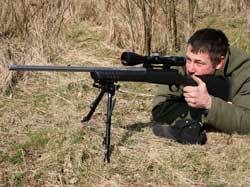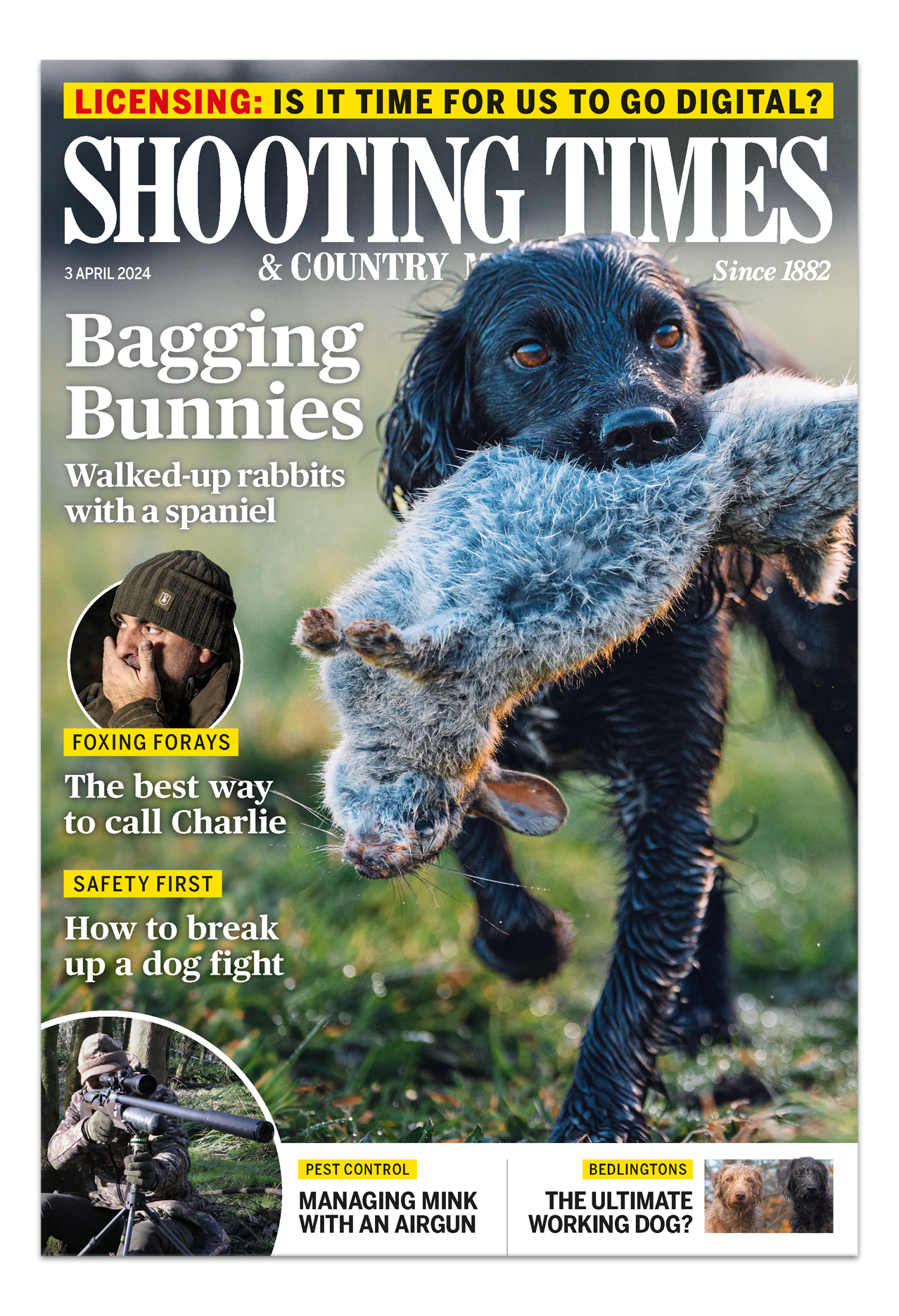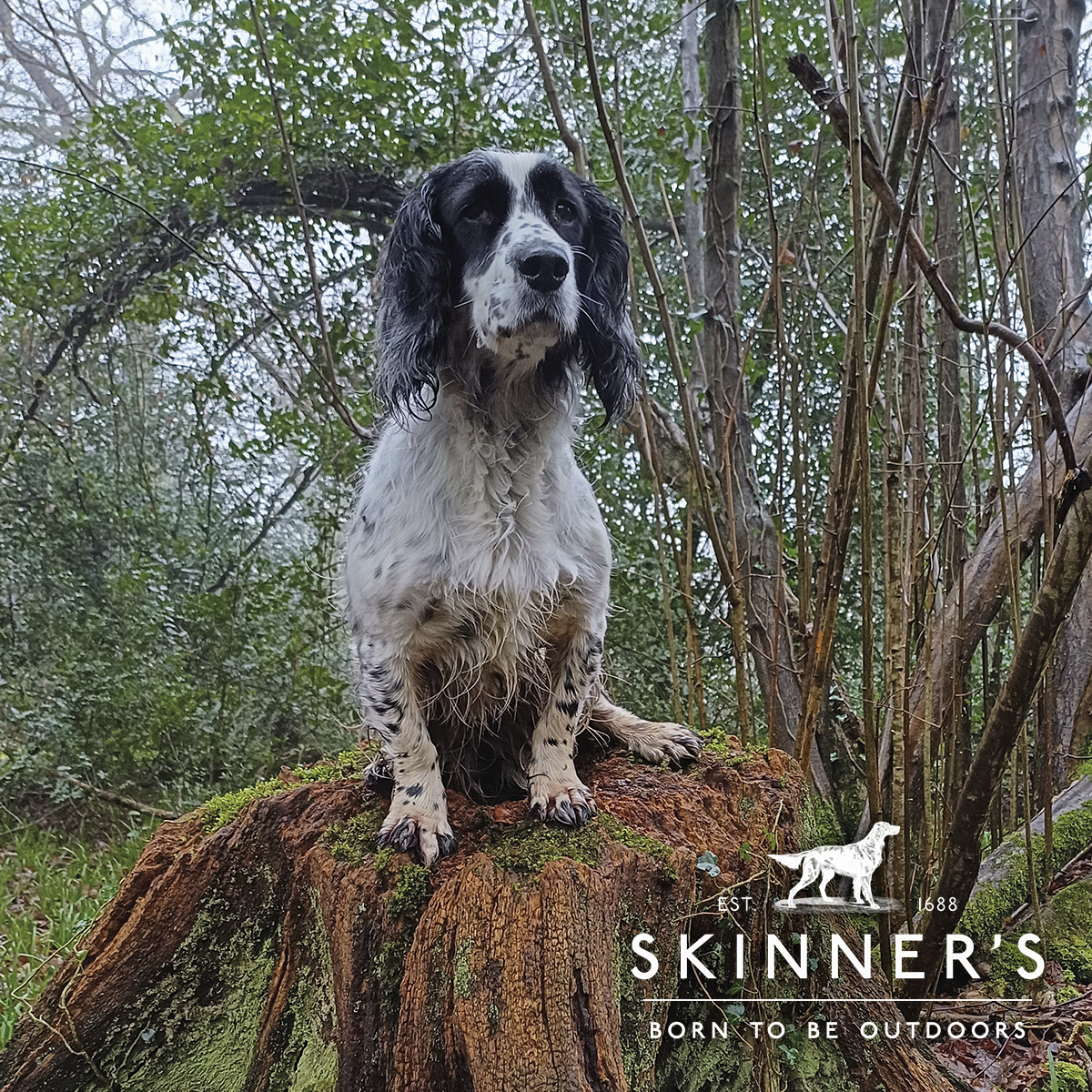Winchester Coyote Lite .22-250 rifle review

Winchester Coyote Lite .22-250 rifle review
Manufacturer: Winchester
Winchester Coyote Lite .22-250 rifle.
The Coyote model is the perfect genesis from the tried-and-tested Winchester Model 70 bolt-action.
Whereas the original Model 70 is a classic rifle with blued-metal and figured walnut stock, the Coyote takes a completely different path.
It was made as a true hunting tool, with each feature designed to aid the hunter in a successful stalk. This model offers a 24in stainless steel barrel, with matt blued receiver and synthetic stock, in a profile that transcends a hunting model with a blend of varminter.
The test model came in .22-250, making it great for foxes and legal for roe in Scotland, though .223, .243 and .308 models should soon be available.
Over a barrel
The barrel profile strikes a good balance between medium and heavy, but includes flutes to reduce the weight. Nicely recessed, the flutes extend two-thirds of the way along its slow-tapered length; they not only look good, but also allow a heavier profile barrel and therefore good rigidity and accuracy.
The finish is an evenly brushed stainless steel and, at 24in long, I was expecting some good accuracy and velocities from the Coyote in the field test. Sadly, it was not threaded for a sound moderator, which would have been very handy, as increasingly shooters are realising the benefits of reduced noise.
Action stations
Pure Winchester, the action is the same as the stalwart Model 70. It is simple and strong, and incorporates a push-feed and coned breech design, which aids in the smooth transfer of cartridge from magazine to barrel, as well as a hinged magazine floor plate, with three-position safety located at the rear of the bolt. The rear-angled bolt handle is comfortable and sweeps down nicely, giving the shooter a sense of authority as the action is cycled.
Cartridges are accurately fed into the chamber and just as reassuringly extracted and ejected by the fixed blade ejector, which sits at the rear of the bolt raceway on the left. This Controlled Round Push Feed (CRPF) system ensures the cartridge enters the chamber directly without damaging the bullet’s tip.
The large centralising Win ’64-style claw extractor is the reason here. The bolt body is nicely jewelled for looks and has twin opposing locking lugs that give a solid lock up when the bolt is closed. Though I dislike the three-position wing safety, it does allow ease of access and relatively quiet operation, and no interference with regard to scope clearance.
Happy with the trigger?
Winchester has always favoured an uncomplicated and simple trigger design, and there’s nothing wrong with that. On the Coyote, the trigger pressure was set at a conservative and safe 5.5lb. If this is too heavy then the mechanism is easy to adjust: the threaded shaft contains three lock nuts that affect the trigger pressure and let-off. After a little adjustment, the Coyote had a 3lb trigger pull that was ideal: safe and crisp, with no over-travel. The trigger blade is quite thin, which bothers some people, and there was enough room within the trigger-guard for a gloved hand, handy on those cold winter stalks.
Super synthetics
The new ‘Lite’ version of the Coyote gets its name from the reduced weight of the barrel fluting and the use of a Bell and Carlson synthetic stock to replace the heavier laminated version. The stock is the first thing that strikes you about the Coyote Lite. All black, with its four striking cut-out ventilation holes in the fore-end making it look like a shark’s gills, it gives the Winchester a contemporary look and will stand out. The vents go all the way through the fore-end and are there to assist in heat dispersion and aid cooling after an arduous day’s varminting – possibly. Who cares – they look rather good.
The fore-end is of typical flat beavertail style, with heavy recessed finger grooves on the top elevation. This allows a good hold when supporting with the hands or when a Harris bipod is attached for prone shooting. The pistol grip is nicely racked and chequered, and, despite no cheekpiece, the comb height is not bad and so scope eye-relief is actually quite good. A solid black Pachmayr Decelerator rubber recoil pad finishes the stock.
Extra care has been taken with the bedding of this rifle and an aluminium bedding block contacts the action ensuring a positive grip and uniform platform for stock-to-metal fit.
The recoil lug is factory-bedded with a synthetic bed material, which, though minimal, is ample for positive location, despite the fact that the rear securing screw has little stock material to bind with. Overall, though, it is a well laid-out and strong stock design that incorporates two sling swivel studs to the fore-end for versatile bipod mounting and simultaneous sling attachment.
Changing sights
The long receiver is drilled and tapped for scope bases and I fitted a one-piece Weaver-style base as I also wanted a quick-change facility in order to try out some new night vision equipment for fox use. As an all-round scope I chose the excellent Kahles Multizero CS. Possessing a magnification range of 2.5-10×50 and equipped with a great bullet-drop compensating turret system, I was looking forward to a good field test.
Twist and shoot
Most .22-250 rifles have a barrel rifling twist rate of one-in-14in, making them great at stabilising the lighter, faster bullet heads from 40 grains to 50 grains. Any heavier than this and accuracy begins to deteriorate due to the instability of the bullet. The Coyote on test actually had a tighter twist rate, of one-in-10in, and so should shoot the heavier 55-grain bullets better. I chose a good section of factory ammunition and shot some reloads as a comparison.
The reloads shot well, and a 40-grain Nosler ballistic tip, with 41.25 grains of H414 powder behind it, screamed over the chronograph at 4,012fps. Accuracy was good at slightly more than 0.65in at 100 yards for a five-shot group. The 50-grain loads were equally accurate, all between 0.5in and 1in, and the best load was a Sierra 50-grain Blitz King bullet, propelled by 38.5 grains of VIT N140 powder, to achieve a velocity of 3,855fps and 1,650ft/lb energy.
I tried some heavier loads of 55 grains and the best was a factory load of Remington Power Lokt Hollow Points, which shot a constant 0.6in grouping at 100 yards. The 60-grain bullets were just about okay at more than 1.25in at the higher velocities but, despite the twist rate, failed really to shine. Stick with the 50-grain loads for flat-shooting accurate loads from this rifle against foxes, or shoot a more controlled expanding bullet such as the Sierra 55-grain Game King for roe in Scotland.
Indeed, so complete was the Coyote Lite, with its weatherproof skin and handy configuration, that I shot several long-range foxes with instant results. The Kahles scope certainly helped here, too, but Winchester, despite showing its age with the action layout, has come up with a great fox tool in .22-250 and deer rifle in .243 or .308 calibres.
TECH SPEC
Make: Winchester Coyote Lite
Importer: BWM Arms Ltd (01235) 514550
Calibre: .22-250
Action: Bolt-action model 70
Barrel: 24in Fluted
Overall length: 44in
Magazine: Floor plate four shots
Stock: Black synthetic and bedding block
Weight: 7lb 8.5 oz
RRP: £699
PROS:
Great styling, accurate, synthetic weather resistance
CONS:
Noisy safety, not threaded for a moderator








